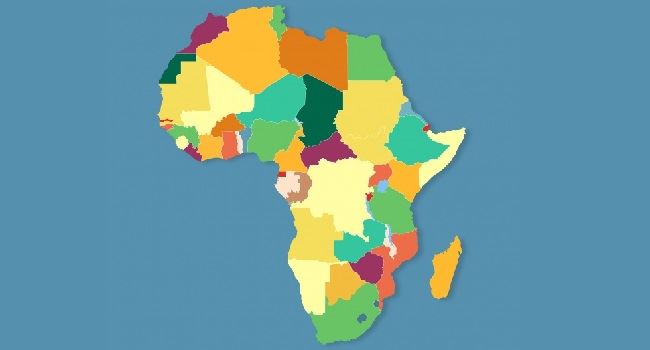Business
UN projects Africa’s economic growth rate to increase in 2024

The United Nations (UN) has projected Africa’s growth rate to slightly increase from 3.3 per cent in 2023 to 3.5 in 2024, while global growth is expected to slow down.
Global growth is expected to slow down from 2.7 per cent in 2023 to 2.4 per cent in 2024.
This is according to the UN’s World Economic Situation and Prospects (WESP) report for 2024 launched in New York on Thursday.
The report also projected growth for the Least Developed Countries (LDCs).
The flagship forecast notes that the LDCs are projected to grow by five per cent in 2024, yet this falls short of the seven per cent growth target under the Sustainable Development Goals (SDG).
According to the report, global inflation is projected to decline further, from an estimated 5.7 per cent in 2023 to 3.9 per cent in 2024. But price pressures are still elevated in many countries and any further escalation of geopolitical conflict will add to that.
In about a quarter of all developing countries, annual inflation is projected to exceed 10 per cent in 2024, the report highlighted.
Since January 2021, consumer prices in developing economies have increased by a cumulative 21.1 per cent, significantly eroding the economic gains made following the COVID-19 recovery.
“Persistently high inflation has further set back progress in poverty eradication, with especially severe impacts in the least developed countries,” said Li Junhua, Head of the UN’s Department of Economic and Social Affairs (DESA).
“It is absolutely imperative that we strengthen global cooperation and the multilateral trading system, reform development finance, address debt challenges and scale up climate financing to help vulnerable countries accelerate towards a path of sustainable and inclusive growth.”
Continuing, the report said developed countries experienced a robust recovery with low unemployment rates, notably 3.7 per cent in the U.S. and six per cent in the EU in 2023, coupled with rising nominal wages and narrowing wage inequality.
“However, real income losses and labour shortages pose challenges.
READ ALSO:Obasanjo warns future generation about rising African debts
“Developing countries show mixed progress; while nations like China, Brazil, Türkiye, and Russia report declining unemployment, gender gaps, and high youth unemployment persist.
“Globally, the decline in women’s labour force participation came to 47.2 per cent in 2023 (compared to 48.1 in 2013) and the high NEET rate (not in employment, education or training) of 23.5 per cent among youths highlight enduring challenges,” said the report.
It said there was a notable slowdown in investment growth across both developed and developing economies.
“While developed countries have continued to channel investments into sustainable and technology-driven sectors like green energy and digital infrastructure, developing countries face challenges such as capital flight and reduced foreign direct investment.
“Global investment growth is expected to remain low due to economic uncertainties, high debt burdens, and rising interest rates.
“Investment in the energy sector, especially in clean energy, is growing but not at a pace sufficient to meet the net-zero-emissions goal by 2050,” the report stated.
It also noted that international trade was losing steam as a growth driver, with global trade growth weakening to 0.6 per cent in 2023, recovering to 2.4 per cent in 2024.
The report observed a shift in consumer spending from goods to services, rising geopolitical tensions, supply chain disruptions, and the lingering effects of the pandemic as factors impeding trade growth.
“Furthermore, the shift towards protectionist policies in some countries has also influenced trade dynamics, leading to a reevaluation of global supply chains and trade agreements,” it said.
The report noted that developing countries faced high levels of external debt and rising interest rates, making access to international capital markets difficult.
It added that there was a decline in official development assistance and foreign direct investment for low-income countries.
“Debt sustainability has emerged as a critical challenge, especially for developing countries, in the wake of rising debt levels and changing global financial conditions.
“The increase in global interest rates, a consequence of monetary policy tightening by central banks like the Federal Reserve and the European Central Bank, has escalated debt servicing costs, particularly for countries with foreign currency-denominated debts.
“As a result, many countries are grappling with the need for debt restructuring,” said the report.
On climate change, it stated that 2023 saw extreme weather conditions worsen, including the hottest summer on record since 1880 leading to devastating wildfires, floods, and droughts worldwide.
It said these events had direct economic impacts, such as damage to infrastructure, agriculture and livelihoods.
Studies have predicted substantial losses to the global economy due to climate change; for instance, some estimates suggest a potential reduction of about 10 per cent in global GDP by 2100, considering events like the collapse of the Greenland ice shelf.
Other models indicate that without mitigation of global warming, average global incomes could be 23 per cent lower by 2100.
By Babajide Okeowo
Join the conversation
Support Ripples Nigeria, hold up solutions journalism
Balanced, fearless journalism driven by data comes at huge financial costs.
As a media platform, we hold leadership accountable and will not trade the right to press freedom and free speech for a piece of cake.
If you like what we do, and are ready to uphold solutions journalism, kindly donate to the Ripples Nigeria cause.
Your support would help to ensure that citizens and institutions continue to have free access to credible and reliable information for societal development.
























